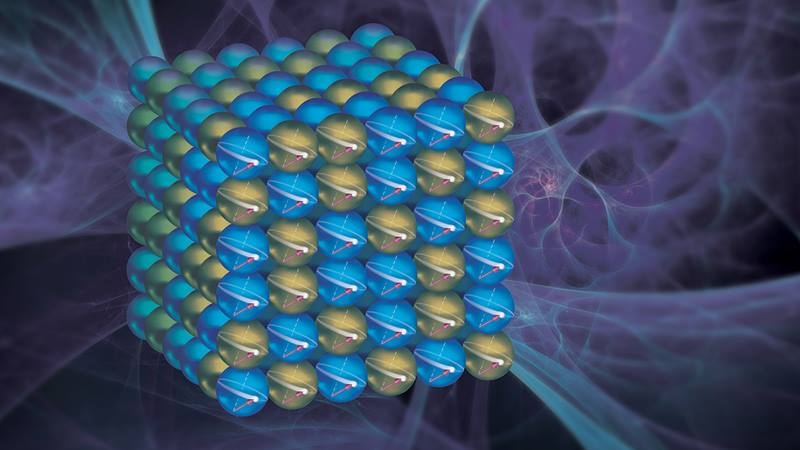The Science
Computer storage devices often use magnetic materials printed on very thin films. In this study, researchers rotated cobalt-iron alloy thin films relative to an applied magnetic field. Unexpectedly, depending on the rotation angle, a sizeable change – up to 400% – was seen in how well the material holds on to energy (referred to as “damping anisotropy”). The key difference appeared to be that these materials are usually heated to high temperatures in making computer disk drives– resulting in a well-ordered atomic structure. In this research, unbaked alloys, with more random arrangements of the atoms were used. To explain the physics of the observation, the electronic and magnetic structures were calculated. The calculations showed that the variable separation of the disordered atoms altered the interactions among the spins and thus changed their magnetic effects.
The Impact
Control of intrinsic magnetic properties in a single device is a long-standing challenge for scientists and engineers. This study highlights a key mechanism that could be used to control a major magnetic property in these thin-film magnetic metals. A device using this technique could be four times more energy efficient than current devices. Such capability is important for exploration of new technologies and improving future devices, such as those used in computer memory, electric motors, generators and magnetic bearings.
Summary
A phenomenon called “Gilbert damping” explains the relationship between the energy required and speed at which a magnetic device can operate. Higher damping of the energy leads to faster relaxation. The ability to tune and explore magnetic damping in ferromagnetic materials used in magnetic memory and spintronic devices is critical to designing improved devices. Exploring the changes in the intrinsic damping induced by rotating the magnetization orientation along crystalline axes is thus far one of the most promising approaches to study how to design and control the damping for an individual magnetic device. In this research, an international team led by Argonne National Laboratory combined experiment and theory to make, characterize, measure and calculate physical properties of epitaxially thin Co50Fe50 metal films. Rotating the metallic films in magnetic field caused up to 400% variation in the magnetic damping. In order to investigate the origin of this unexpected anisotropy, a series of magnetic, non-collinear density functional theory calculations of the electronic and magnetic structures were performed by using the Quantum Espresso software available for high-performance computation at the Argonne Leadership Computing Facility. Calculations incorporated electron spin-orbit coupling effects for three materials with differently oriented cobalt-iron structures. The researchers found that spin-orbit coupling induced changes were dominant and affected the anisotropy of magnetic damping more significantly in disordered alloys. This suggests that the origin of the experimental observation of a giant Gilbert damping anisotropy in a metallic ferromagnet can be explained by the variation of the spin-orbit coupling for different magnetization orientations in the cubic lattice. This integrated experimental and theoretical study provides a promising strategy for tailoring the damping and dynamic properties within a single magnetic device.
Funding
- U.S. Department of Energy, Office of Science, Materials Science and Engineering Division, including support of the Center for Predictive Simulation of Functional Materials (transport measurements, theoretical modeling, and first-principles calculations).
- U.S. Department of Energy, Office of Science, Advanced Scientific Computing Research, Innovative and Novel Computational Impact on Theory and Experiment (INCITE) Program, and the Argonne Leadership Computing Facility (MIRA)
- National Key Basic Research Program (2015CB921401), National Key Research and Development Program (2016YFA0300703), NSFC (11734006,11474006,11434003), and the Program of Shanghai Academic Research Leader (17XD1400400) of China. (thin film growth and fabrication)
- U.S. National Science Foundation – Grant No. DMR-1808892, Michigan Space Grant Consortium and DOE Visiting Faculty Program.
- Bogazici University Research Fund (17B03D3), TUBITAK 2214/A, and U.S. Department of State Fulbright Visiting Scholar Program.
Original post https://alertarticles.info
